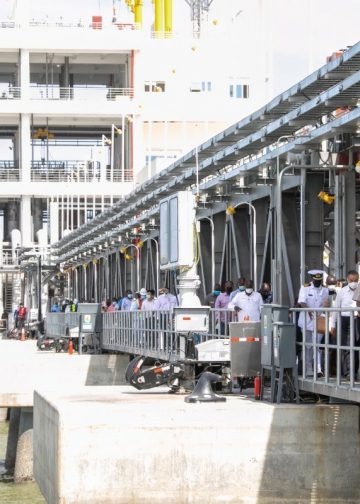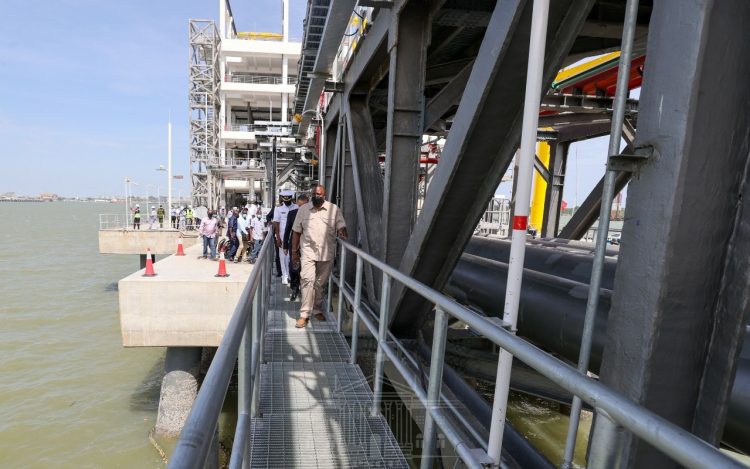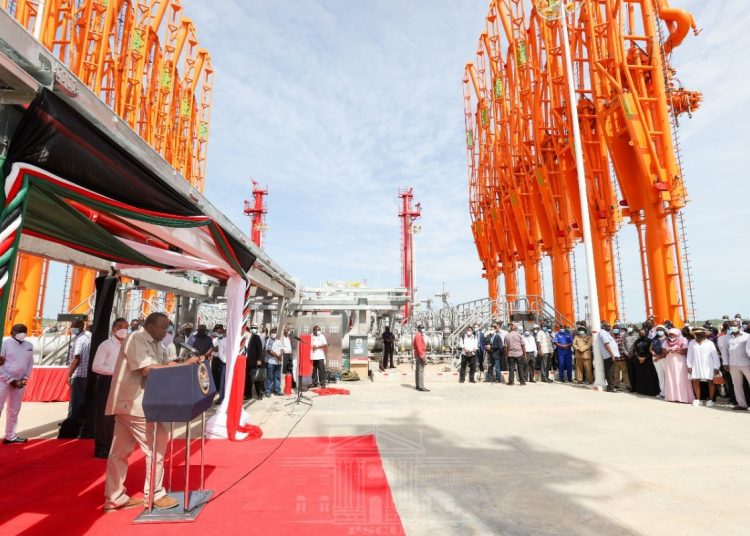The Ksh40 billion offshore Kipevu Oil Terminal (KOT) at the Port of Mombasa is set to become the largest oil jetty of its kind in Africa upon completion.
The 770m jetty, fully funded by the Kenya Ports Authority (KPA) and constructed by China Communication Construction Company (CCCC), has a capacity to load and offload very large vessels of up to 200,000 DWT carrying all categories of petroleum products including crude oil, white oils and LPG.
President Uhuru Kenyatta on Thursday inspected the ongoing construction of the oil jetty, which is currently 96 percent complete. President Kenyatta was accompanied by visiting Chinese State Counsellor and Minister for Foreign Affairs Mr Wang Yi.

This new oil terminal will effectively replace the old Kipevu Oil Terminal situated on the mainland Port Reitz, which was built in 1963 to serve the then East Africa Oil Refinery (EAOR) which later became the Kenya Petroleum Refineries Limited (KPRL).
Read: Tanzania’s Suluhu to seal punctured relations with Kenya
The Old KOT is a single jetty with a capacity to accommodate only one vessel at any given time. Then the discharge pipe sizes were smaller, product and discharge flow rates were also much slower although they served well at the time.
The new terminal has five sub-sea pipelines which were buried 26meters under the seabed to allow for future dredging of the channel without interfering with the pipes.
There are risers dedicated to a separate oil product connecting the terminal to the Kenya Petroleum Refineries Limited (KPRL) and Kenya Pipeline Company (KPC) storage tanks.

Once complete the new oil terminal facility will have four berths (One not fully equipped) capable of handling six different hydrocarbon import and export products; it is also fitted with an LPG facility, crude oil and heavy fuel oil. It also has provisions for handling three types of white oil products (DPK- aviation fuel, AGO – diesel and PMS – petrol).
The terminal will for a start be able to accommodate three ships concurrently with a capacity of 200,000 tons each. A fourth berth has already been constructed provisionally, which will be fitted with facilities in the future commensurate with demand, to be able to handle a fourth ship.





![Mr Prasanta Das Sarma, Airtel Kenya chief executive officer, during a past product promotion. [Photo/ NMG]](https://financialday.co.ke/wp-content/uploads/2022/01/airtel-75x75.jpg)
